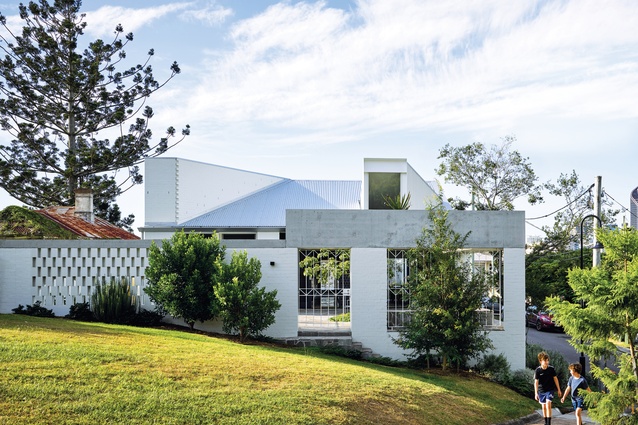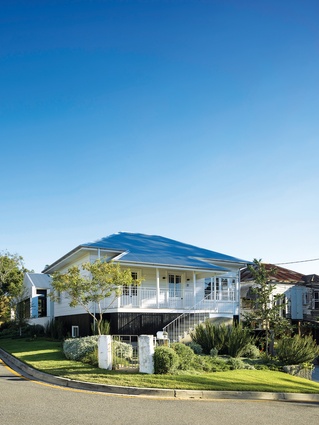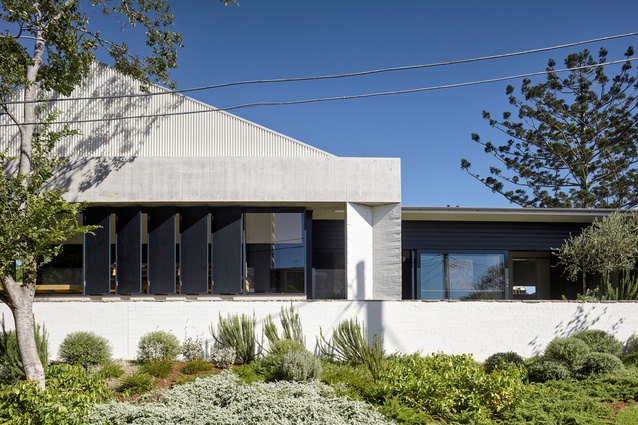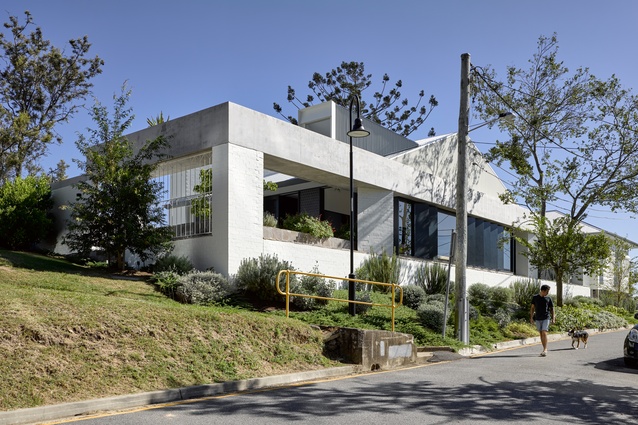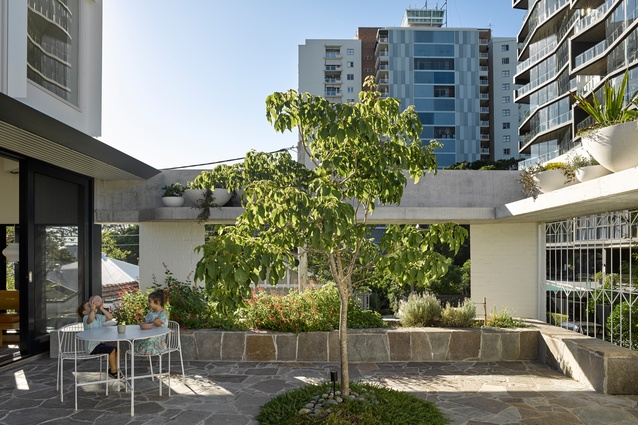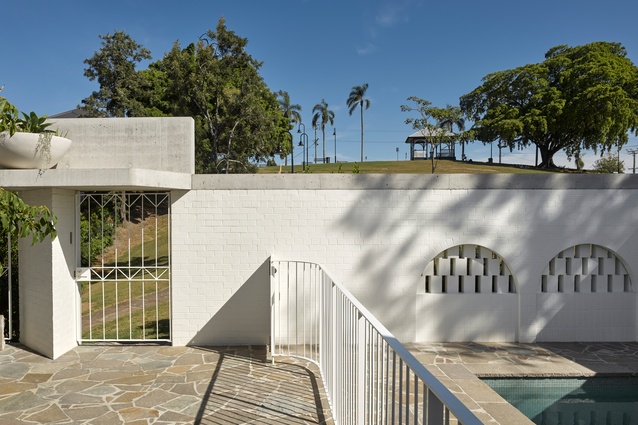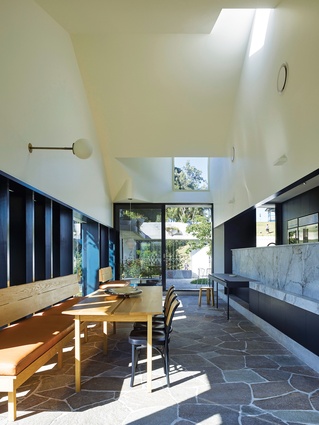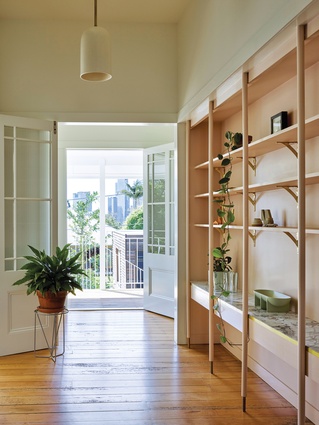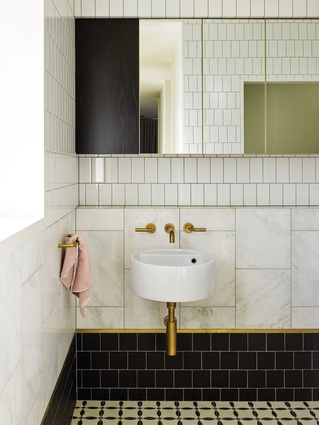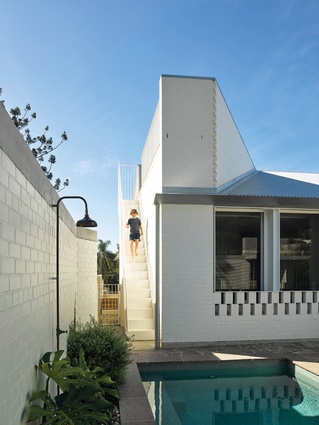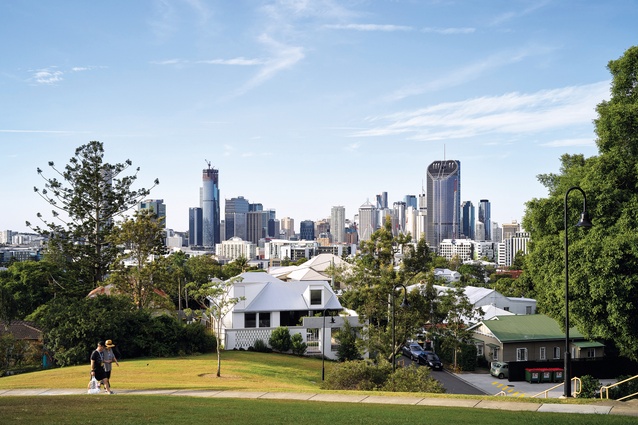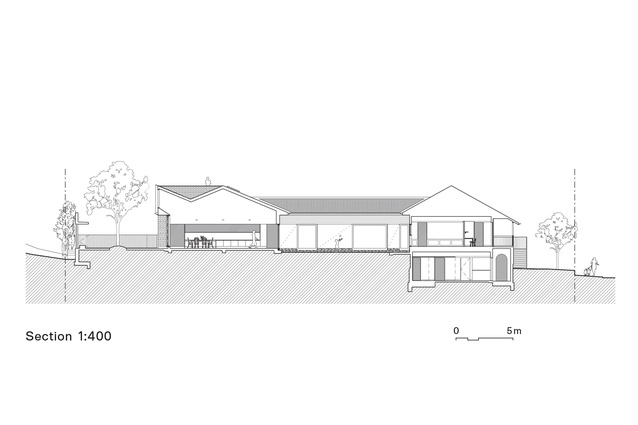A sense of familiarity and nostalgia: Highgate Park House
An addition to an 1860s cottage, Highgate Park House allows passers-by a glimpse into the history of its suburb while affording those who live there a home that is distinctly their own.
For many homeowners, the decision to engage an architect is accompanied by a desire to create a sense of belonging in the house they inhabit. To make a house a home is a personal endeavour. Be it in the physical making of the place or the types of spaces required by the occupants, creating a place of one’s own draws on history, family relationships and interactions with neighbours.
Highgate Park House, located in an inner Brisbane suburb, is a house for a young family of four. The couple’s childhood roots in the area drew them back to establish their own home. They purchased a run-down cottage, a four-room timber building that had been severely disfigured by a mid-century-era renovation whereby the original roof form, verandah and nearly all of the house’s distinctive features had been removed.
Dating back to the late 1860s, the original cottage is thought to have been home to one of the first colonial settlers in the area and its occupants are believed to have given the suburb its name. Despite the house’s place in history, for architecture practice Vokes and Peters it was obvious that there would be no going back to reclaim the building that had been lost. The eucalypt-forested hillside setting was long gone, replaced with mid-rise residential apartment buildings, making for a heavily overlooked site further challenged by its location at the bottom of the hill of the neighbouring public park.
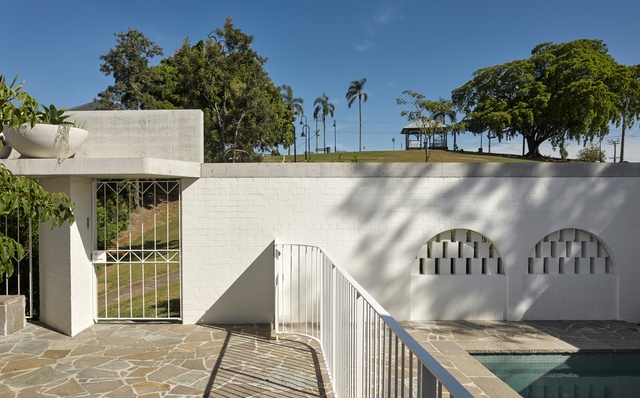
Rather than turn the building inward in a quest for privacy, Vokes and Peters has designed an addition that openly engages with the street edge. A protective garden wall of masonry and concrete defines an inner courtyard garden, patio and dining and living rooms. Raised above street level to meet the level of the park and original cottage, the addition is punctuated by arched openings, brick screens and splayed reveals. The garden wall provides a ledge for plants that will, over time, become a curtain of greenery to screen the poolside patio.
Occupying part of this wall, the dining room is undeniably civic in its quality: it takes ownership of the park edge, embracing interactions with the walkers and runners who use the diagonal pathway across the park to the house’s side-street interface. A combination of solid timber shutters and large glazed picture windows allows the family to control the degree of privacy afforded within. From here, kids can be watched rolling down the park hillside or neighbours waved at over the morning papers.
Practice director Aaron Peters says he awaited the inevitable point at which the clients would request additional layers of curtains and blinds for privacy, but it did not come. While Aaron puts this down to the family’s dynamic and inclusive Mediterranean heritage, this comfort in exposure has been thoughtfully curated. The building reveals in appropriate places while also creating quiet spaces for retreat.
The hallway is split by a thickened “working wall” consisting of a powder room, workspace, framed openings and shelving. This contemporary cloister provides spaces for promenade, retreat and reflection in much the same way as its medieval counterpart, allowing the family to engage and disengage with the street as they desire. Beyond the cloister, bedrooms form the final layer of the home, placed at the most discrete and private edge of the site.
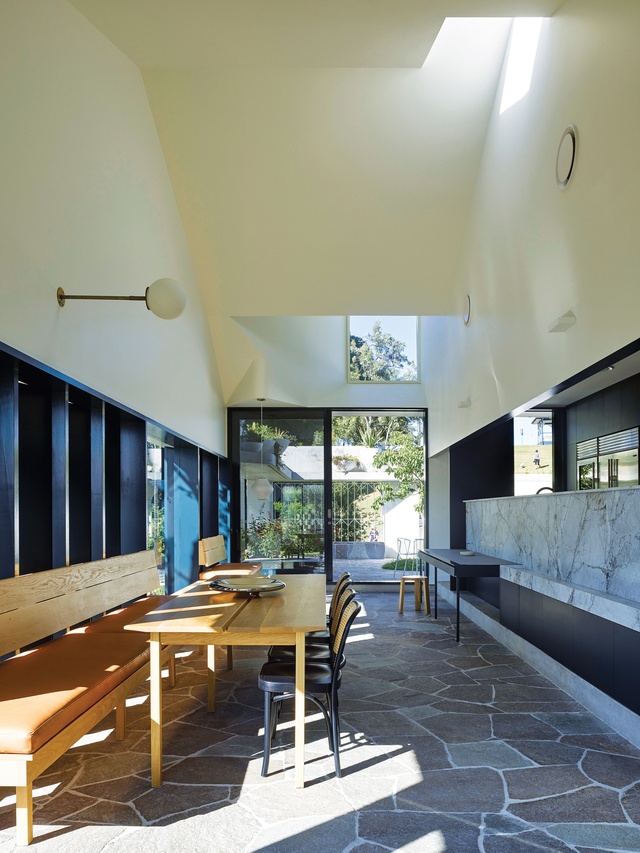
The detailing within the house continues the celebration of refined carpentry that Vokes and Peters has come to be known for. Dowel-legged, open-frame shelves are accompanied by an expressed plank construction bench seat and dining table crafted by local makers Mast Furniture. An additional layer of filigree is added with fine steelwork gates, fences and decorative screens constructed by the client’s father, a semiretired metalworker. With the client’s brother also acting as the structural engineer for the project, it is in the crafting of this building that the wider family’s ownership of the space comes into play. Vokes and Peters’ inclusion of the owners’ family’s skills gave them the opportunity to explore their own interest in what they refer to as the “DIY culture” of Brisbane’s inner-city suburbs.
Vokes and Peters describes the verdant vegetable gardens, ornate metalwork and decorative brickwork that are characteristic of these neighbourhoods as resulting in an authentic aesthetic of homes built by those who inhabit them, using what they had to hand. At Highgate Park House, productive gardens with citrus trees and rosemary bushes spill over the house’s edges. Zigzagging steel screens are unapologetically decorative beside hit-and-miss brickwork. Coloured paintwork and patterned tiling distinguish the interior palette.
The expression of the house is one of familiarity and nostalgia, offering passers-by the chance to acknowledge a fading history of the suburb. For the family that lives here, the house is distinctly their own and will cement their place in the neighbourhood for years to come.
This article was first published on architectureau.com.

